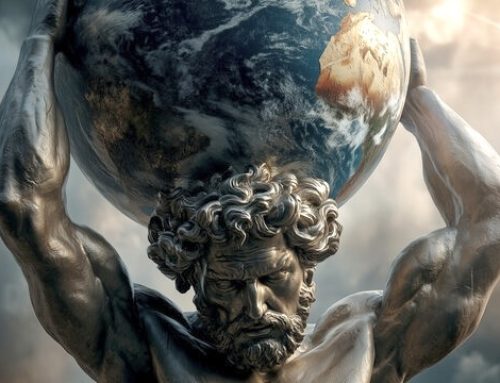There are numerous theories about why societies rise and fall, proffered by even more numerous scholars who attempt to connect the dots of evidence and massage them with nuance into coherent narratives. Paul Kennedy’s The Rise and Fall of Great Powers, Jared Diamond’s Collapse: How Societies Choose to Fail or Succeed, Jeremy Black’s Great Powers and the Quest for Hegemony, and Cullen Murphy’s Are We Rome? offer some interesting and varied approaches to the question. They are each well researched and include reasonable arguments to a complex question. However, in my seemingly endless search for simplicity—to understand the American condition—I have settled on one question, ignored by most studies, that I believe explains a great deal about how societies “rise and fall.” The question is: How do they respond to fear?
The fear response is related to Stephen Flynn’s theory about resiliency as a measure of national power: “a society that can match its strength to deliver a punch with the means to take one makes an unattractive target.”[1] But resiliency has at its core a cognitive component that emanates from societal IBCs (ideas, beliefs, and convictions), which contribute to our collective character. It is this character, which evolves continuously, that determines how we respond to fear like the attacks on Pearl Harbor in 1941, or the Soviet’s launch of Sputnik in 1957, or the attacks of 9/11. It is fair to say that fear brings out the best and worst in a society no matter how strong the collective character is at any particular time.
After Pearl Harbor, American society demonstrated both its cohesion and determination in defeating Hirohito and Hitler, but it also interned Japanese Americans. After Sputnik, Kennedy committed the United States to sending a man to the moon, but he and his successor, Lyndon Johnson, also over-imagined the Soviet and communist menace and nearly started a nuclear war in the Caribbean and did, unfortunately, convince Americans that if we didn’t stop the communists in Vietnam, a contagion would spread that would threaten the lives of every American for generations. After 9/11, American flags waved from anywhere we could attach them, but our fear produced the worst of us as American Muslim mosques were burned, and our leaders became willing fear mongers engaged in falsifying intelligence, and even color-coding fear for systemic consumption. And, while the jury is arguably still out on Iraq and Afghanistan, I’ll go out on a limb and suggest if we had a chance to do it over we wouldn’t have troops in either place today. The more interesting question, however, is what tips our fear response from best to worst?
This is admittedly a tricky question, but the worst fear response appears to have an inverse relationship with prosperity, measured by wealth and power; that is, the more prosperous we have become, the more likely a fear event produces the worst of us. In the three events mentioned above, our fear response was best when we were the least prosperous in 1941, and significantly worse in 2001 when America’s power and wealth were at an all-time high. This seems counter-intuitive; after all, isn’t a wealthy and more powerful nation less fearful and more cohesive? Apparently not.
Wealth and power provide their own toxic effects. In 1941, fear inspired patriotism and produced self-sacrifice, discipline, diligence, and enterprise. In 2001, our patriotism expired even before the flags faded; fear spawned hatred, jingoism, isolation, and hubris. We have lashed out at the world and stand divided and vengeful at home. We want to build walls at the border and persecute those who don’t think like we do, worship our God, or even look and speak like us. And, we wag our fingers at each other and our government demanding our unfair share of what pie remains. In our relative prosperity we have become poor of character. FDR was correct in his day to claim, “all we have to fear is fear itself.” Today, all we have to fear is ourselves.
I would like to argue, as Tom Brokaw has, that the “Greatest Generation”—those who stood tall after Pearl Harbor—were possessed of an intrinsically generous and courageous character, but I see too many of them screaming into the microphone at anger rallies today. Their well-shined image has suffered with the rest of us, subject to the same toxicity of prosperity. To add a further irony, our current national security complex is the largest most extensive security system ever developed with “1,271 government organizations and 1,931 private companies [that] work on programs related to counterterrorism, homeland security and intelligence in about 10,000 locations across the United States.”[2] Yet, we feel less safe than ever.
Maybe it’s not prosperity’s fault. Maybe prosperity isn’t about wealth and power. Maybe its about humility, responsibility, and self-restraint. Maybe it’s about respect. One thing becomes clear: if America is to retain its position in the world, we cannot afford our current sense of entitlement and certitude. Personal responsibility and mutual respect for each other and the precious resources we enjoy deserve our better selves. We must face fear with resolve, not color-coded fear mongering, lest we allow our worst selves to prevail. It’s time to turn off the noise and recapture our greatness. It’s time to stare in the mirror and ask more of ourselves. The path we’re on will otherwise produce an unwelcome and painful poverty of economy, power and dignity. It is time to rebuild our collective character.





